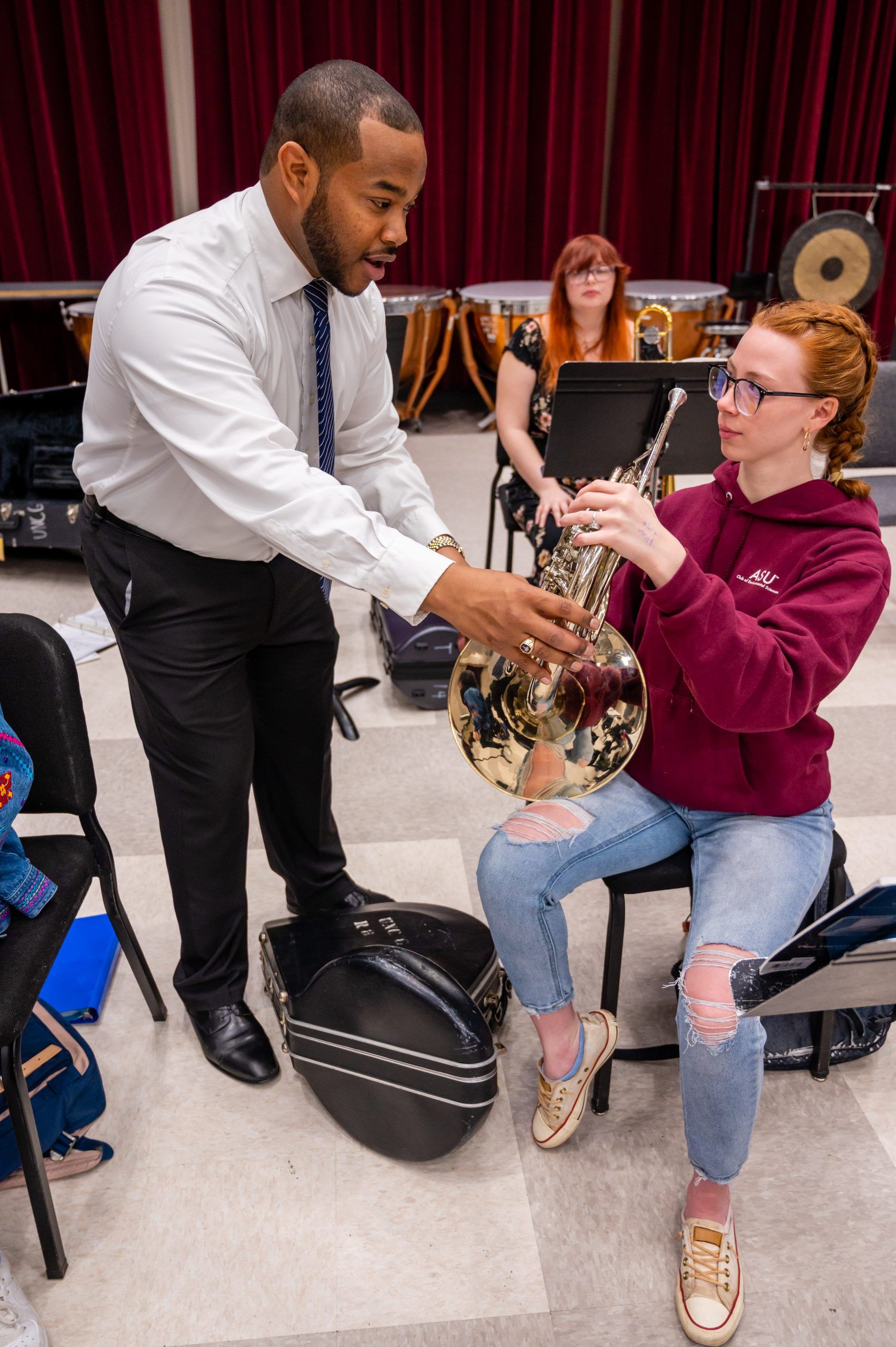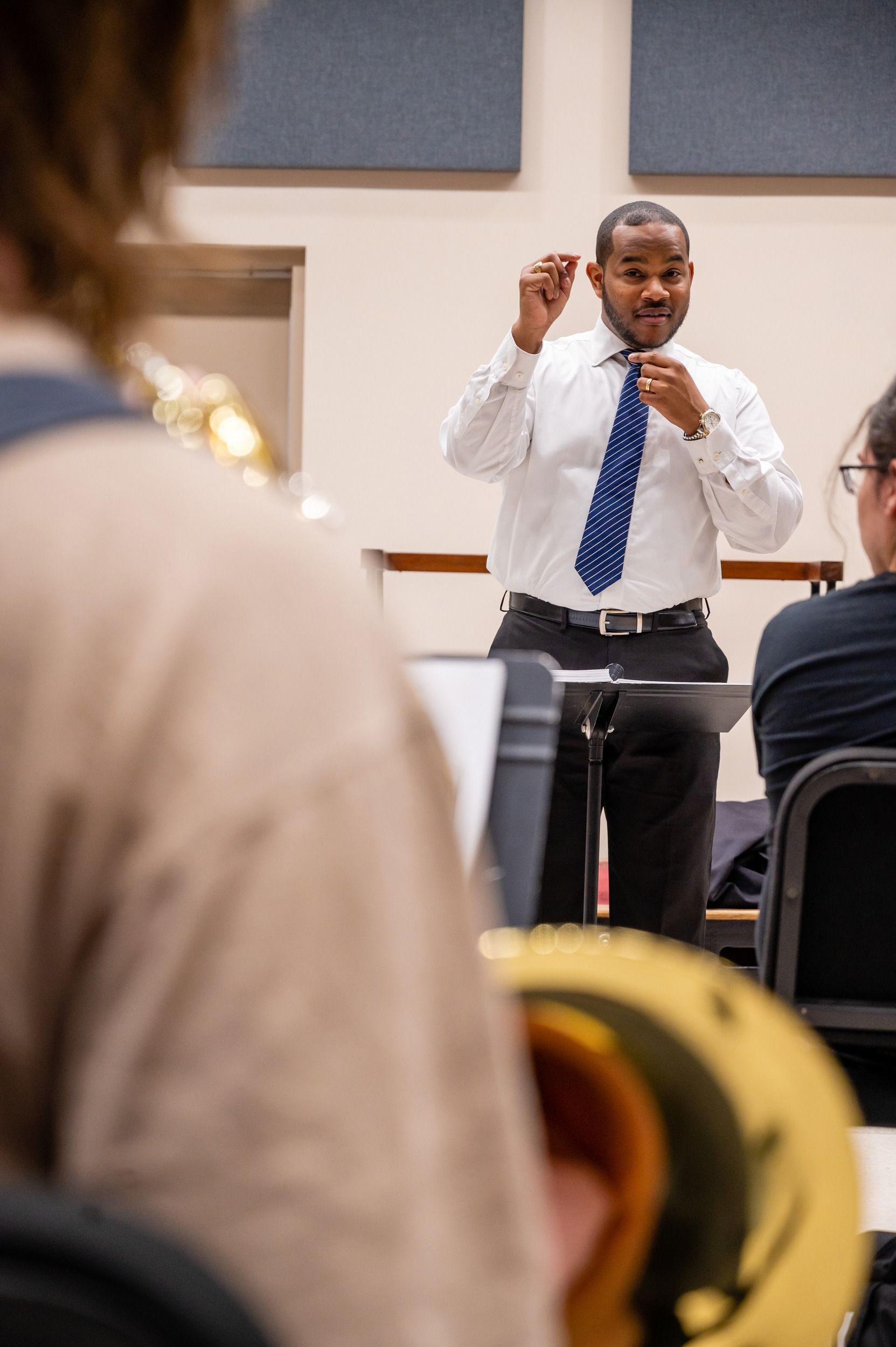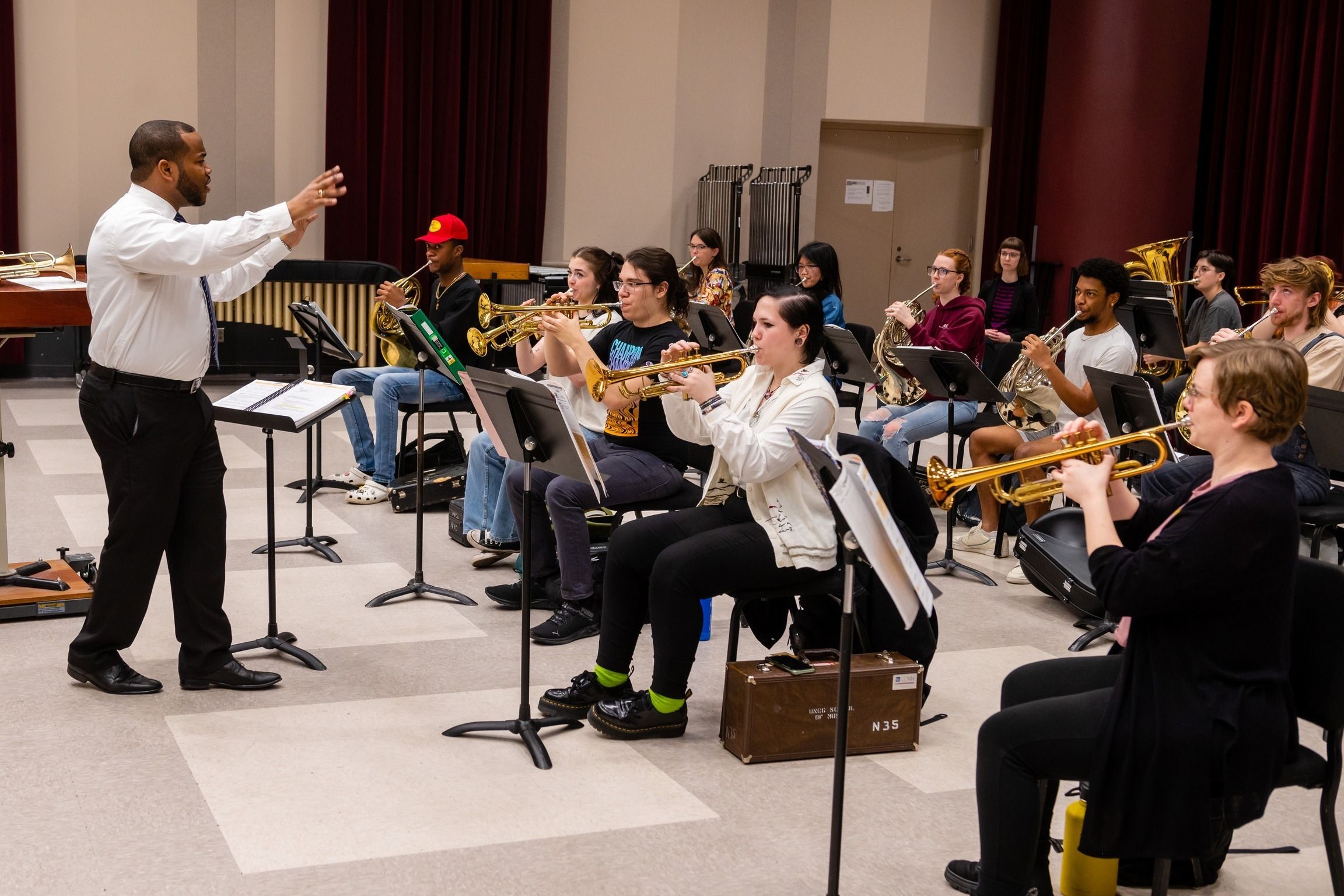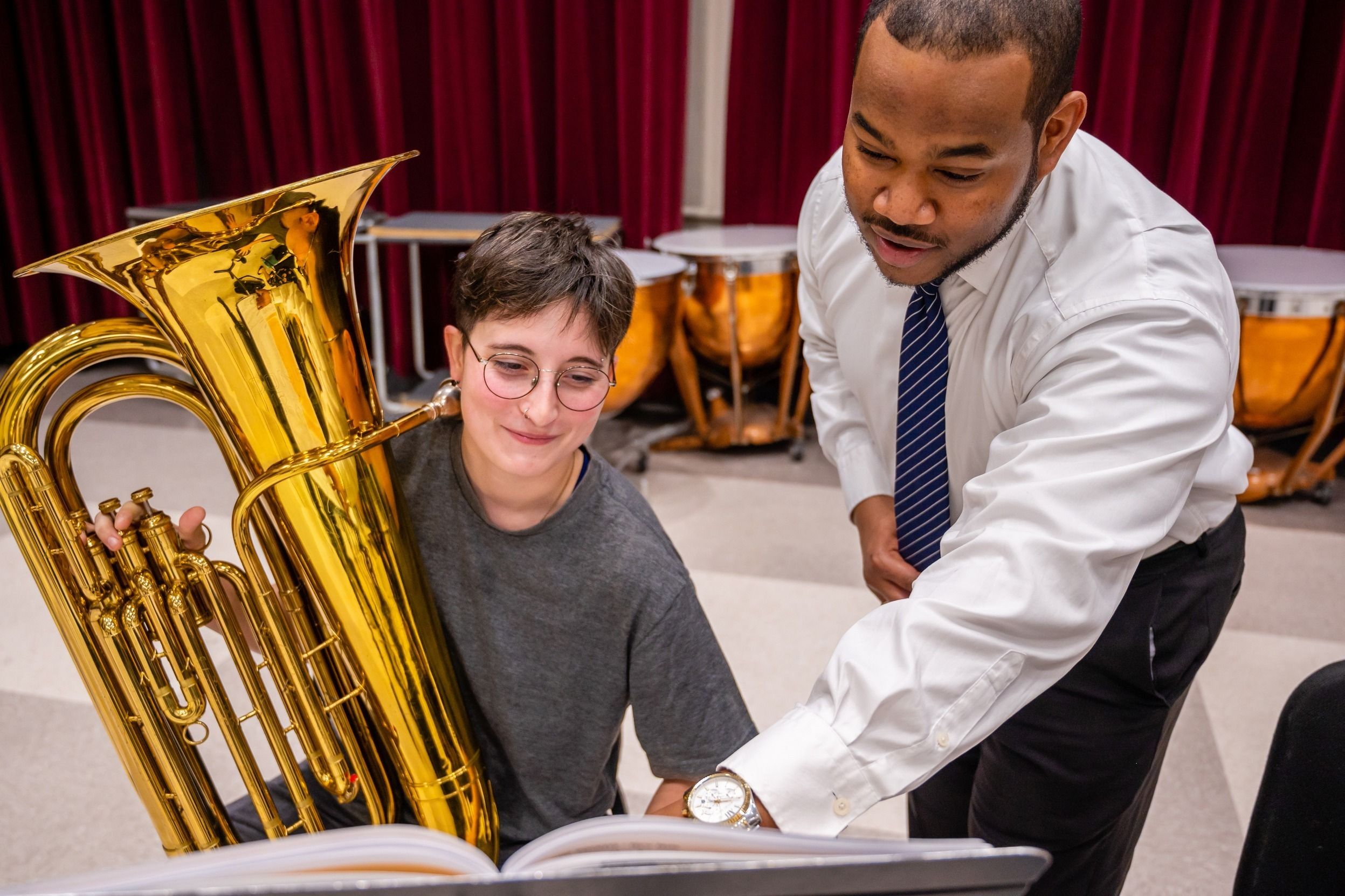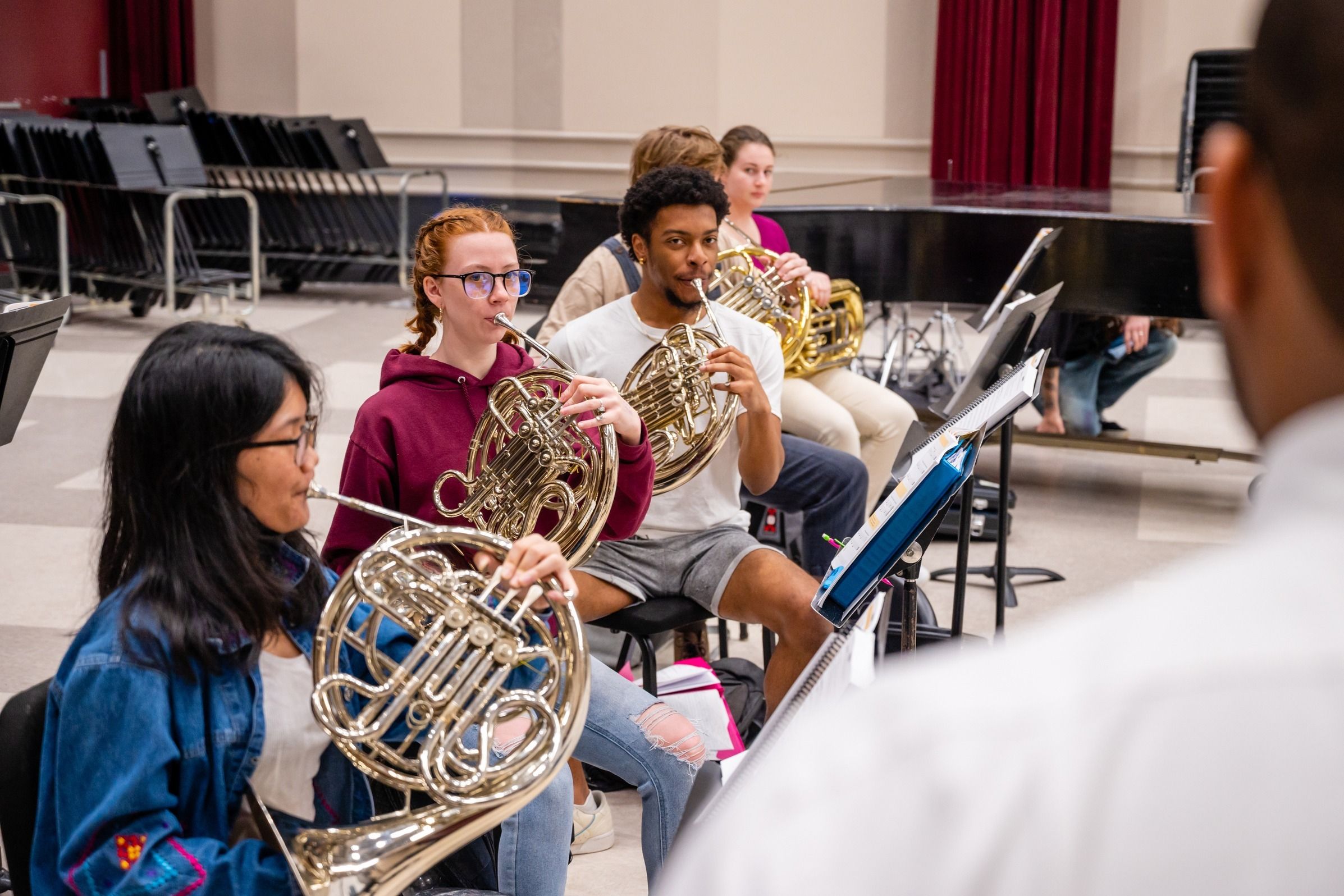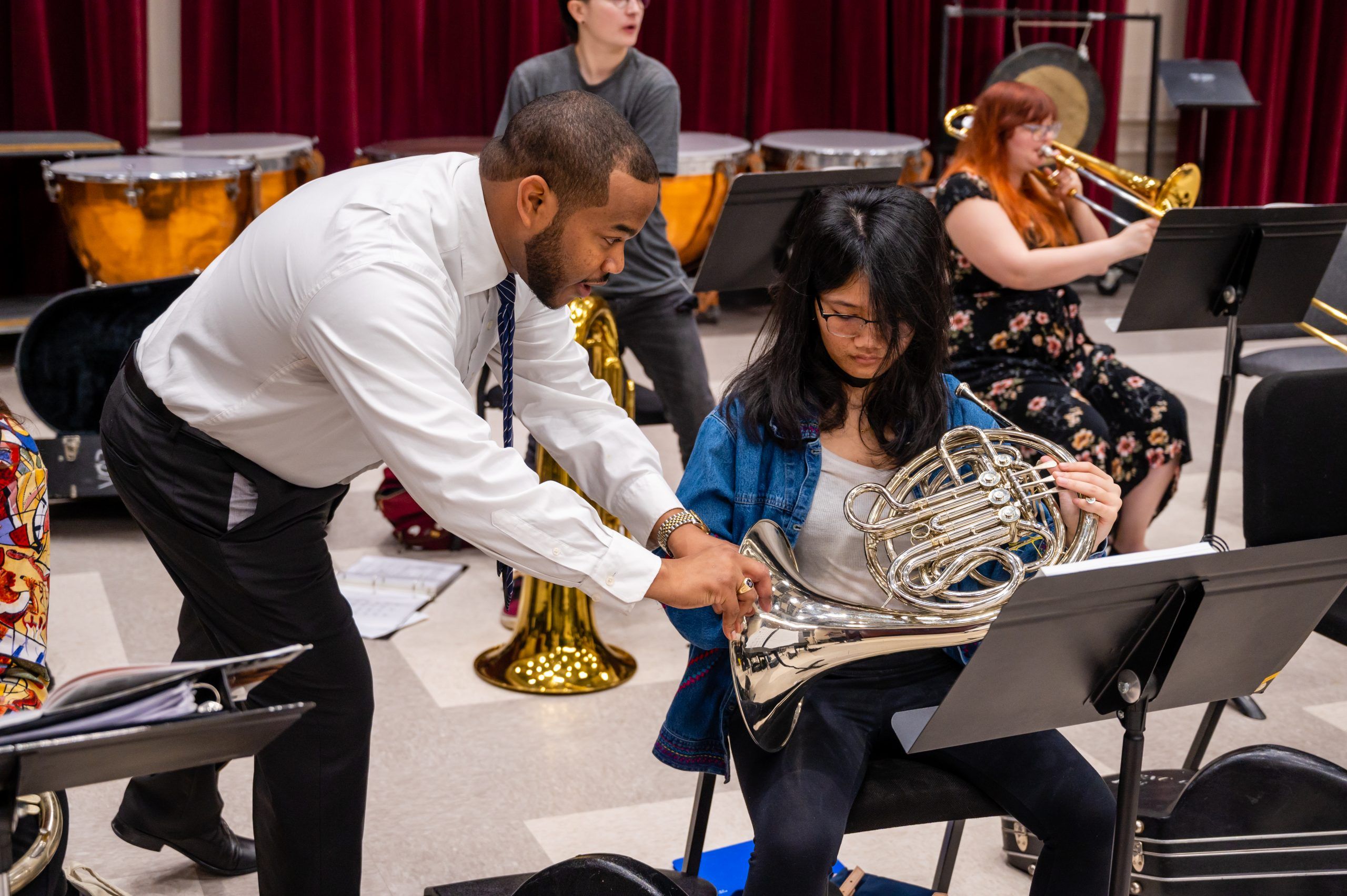HEARING
DISSONANCE
HEARING
DISSONANCE
A music education researcher sounds the experiences of Black students in predominantly White institutions.
Dr. Quinton Parker knows what it feels like to stand out.
Parker, who grew up in Durham, attended multiracial schools throughout his childhood and went to an HBCU for his undergraduate degree in jazz performance. But when he enrolled at a college of music in Chicago for his masters degree, he began to notice a difference.
“There were very few people of color,” Parker says. “It was very isolating. It was lonely.”
Now, as a music education faculty member at UNCG, Parker is digging deeper into his personal experience.
“It led me to the question: Is this everyone’s experience?” Parker says. “And what I learned is that it’s not just that one school, it’s really about the discipline.”
From 2019-2021, Parker worked on his PhD at UNCG conducting research into the experiences of Black undergraduate music education students in predominantly White institutions. He wanted to get past quantitative data and tap into the students’ personal stories.
“It’s easy to describe it in numbers, but change can be brought about when you put readers into the shoes of the person experiencing it,” Parker says.
Through in-depth interviews with nine students, he worked to encapsulate how it feels to be a Black student in a mostly White department and landed on a single concept.
“It’s a dissonant existence,” he says.
“Across all zones of experience, it’s inharmonious. They stood out because of the color of their skin, and it just reinforced the idea of ‘I don’t belong here.’”
Parker found that most of the students’ feelings of dissonance started when they were younger. In elementary and middle school, they didn’t have teachers who looked like them and they were often taught pieces created by White musicians.
As they grew up, they learned to move through the world carefully, paying attention to their tone when speaking or being mindful of how they wore their hair or how they dressed. Almost on a daily basis the students experienced racism both explicit and subtle – things they didn’t feel comfortable sharing with anyone else.
As a result, Parker came up with recommendations for institutions to create more welcoming environments for their Black students. For starters, they need more Black staff and faculty.
Additionally, universities should have measures in place for students to safely report race-related stressors. In a post-George Floyd society, Parker knows there’s an appetite for this kind of work. But he says that stakeholders need qualitative information if they’re to create effective change.
“I definitely see cultural changes,” Parker says. “There’s less public acceptance of racism and discrimination. UNCG has done a great job of addressing the issue, but sadly it’s not the same in every institution. There’s a huge cultural shift that needs to happen.”
As far as being a role model for the next generation, Parker says the students in the study have helped him as much as he’s hopefully encouraged them.
“This process really has made me think about how I exist as a Black person in music,” Parker says. “It inspires you to keep pushing because I know it’s not just me who experienced it; there’s at least nine other people who motivate me to keep pushing.”
